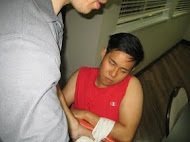Overview
Burns and scalds are damage to the skin caused by wet or dry heat. The pain is associated with swelling, blisters, red or peeling skin, and sometimes white or charred skin. Children are the ones who are prone to burns and scalds. They love to explore things around them and test what their surroundings offer them. Sometimes their curiosity to explore puts them in accidents that eventually injure them.

Children are not aware that hot water or hot drinks can actually cause burns on their skin, which can be really painful. A child’s skin is more sensitive and burns easily compared to an adult skin. This fact puts danger to children from newborn to 14 years old on injuries such as burns and scalds. Due to children’s increased mobility and natural curiosity, burns and scalds proved to be a major cause of serious injuries in children.
Causes Of Scalds
The difference between burn and scald is that burn is damage to skin caused by dry heat. Burns can be from electricity, fire from a cigarette lighter, an accidental touch on a hot iron or heater, or a chemical reaction from accidentally swallowing or tasting household cleaning items. A scald, on the other hand, is caused by wet heat such as steam or any other hot liquid. Most scald injuries are caused by everyday items that are basically used in and around the household.
Most causes of scalds include:
- Hot drinks such as hot coffee or hot tea
- Hot water from saucepans, kettles, thermoses, and jugs
- Saucepans of hot liquids
- Steam and vapour
- Running hot water from bath, taps, and showers
- Hot cooking oil
Injuries Are Likely To Happen When
As a parent, you should be aware of your child’s daily routine and how he reacts to his surroundings. Everything happens to your child may or may not put him in accidental situations such as getting himself burned. Children are most at risk to injuries when:
- You have too much in your hands, under pressure, and in always in a hurry.
- You are feeling unwell.
- You are distracted with too many things in your head and entertaining others.
- You are feeling worn out and tired.
- Your child is exhausted.
- You are out of your daily routine such as on a holiday vacation, travelling, visiting friends and family or away from home.
First Aid for Burns
Burns are very painful. Stop the burning pain immediately as soon as you can by doing the following:
- If on fire
Move further away from the fire source.
Put off the fire with a blanket.
Stop. Drop. Cover. Roll.
- If electrical
Turn off the power switch.
Use a dry wooden object to remove the person away from the electrical source. Do not touch the person with your bare hands.
- If chemical
Safely remove the chemical that is causing the burn.
Thoroughly rinse the burn immediately.
To reduce the severity of the burn, these first aid tips will help:
- Immediately apply cool running tap water for about 20 to 30 minutes to relieve the pain. This is useful for up to 3 hours.
- Do not apply ice, iced water or creams.
- Instantly remove wet clothing if the skin is not blistered.
- Remove all pieces of jewellery right away. Jewellery holds heat and may hinder blood flow.
- Do not hesitate to call an ambulance, dial triple zero (000) for severe burns that have spread over large parts of the body.
- Keep the child warm and calm.
- If the burn is larger than a 20 cent coin with blisters and have spread all over, seek medical attention as soon as possible.
Related Video On Burns and Scalds
https://www.youtube.com/watch?v=2pVGG09VmfQ
